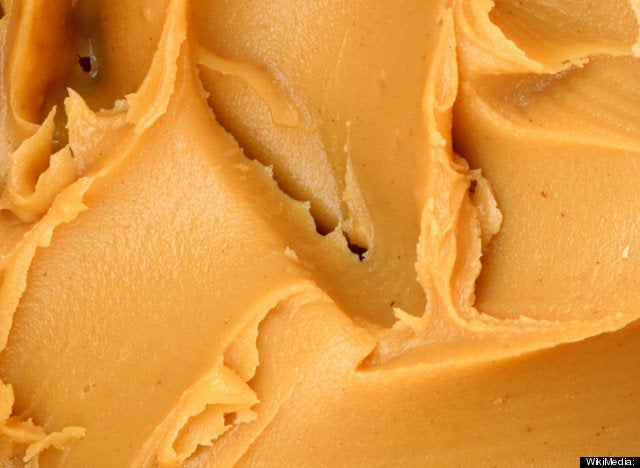
You've heard of pink slime. You know trans fats are cardiovascular atrocities. You're well aware that store-bought orange juice is essentially a scam. But, no matter how great of a processed-food sleuth you are, chances are you've never set food inside a processing plant to see how many of these products are actually made.
Writer Melanie Warner, whose new behind-the-scenes-look-at-the-world-of-processed-foods book, Pandora's Lunchbox, is out this week, spent the past year and a half doing exactly that. In her quest to explore the murky and convoluted world of soybean oil, milk protein concentrates (a key ingredient in processed cheese), and petroleum-based artificial dyes, she spoke to food scientists, uncovered disturbing regulatory loopholes in food law, and learned just how little we know about many of the food products on supermarket shelves.
After reading Pandora's Lunchbox, I sent Melanie some burning questions via email. Here is what she had to say:
The term "processed food" is ubiquitous these days. The food industry has attempted to co-opt it by claiming canned beans, baby carrots, and frozen vegetables are "processed foods." Can you help explain why a Pop-Tart is years away from a "processed food" like hummus?
You have to ask yourself, could I make a Pop-Tart or Hot Pocket at home, with all those same ingredients listed on the package? I don't know anyone who could do that in their home kitchen. How would you even go about procuring distilled monoglycerides and BHT, for instance? These are highly-processed food products loaded up with sugar and sodium, subjected to abusive processing conditions, and assembled with a litany of additives, many of which nobody ever consumed prior to a hundred years ago.
Yet it is possible to make your own black beans at home by soaking and then cooking them. You could even attempt a rudimentary canning operation to preserve them. You can also make hummus by grinding chickpeas with a few other ingredients like lemon juice. The same goes for frozen vegetables and even baby carrots, though homemade baby carrots wouldn't look as pretty as the ones you buy at the store. The "processing" these foods go through is minimal and not disfiguring. The end result still looks like a food that once grew on a farm.
Many people are put at ease when government agencies and the food industry state that controversial substances are "generally recognized as safe." Why is this not as comforting as it sounds?
The idea of something "generally recognized as safe" seems so reassuring, but the more you know about the U.S. system of food ingredient regulation the less cause there is for comfort.
For starters, the GRAS process, as it's known, is one of self-regulation. If a food ingredient company wants to introduce a new additive, they -- not the FDA -- hire some experts or a consulting firm to make the determination about whether this new ingredient is safe. Sometimes you'll hear that company X has been awarded "GRAS status" for its new ingredient, but the FDA doesn't award anything. The agency merely has the option to review what companies tell them.
Except when they don't. In a glaring regulatory loophole that dates back to 1958, the GRAS system also happens to be voluntary. It's perfectly legal for companies to keep the FDA in the dark about new additives, and consequently there are some 1,000 ingredients the FDA has no knowledge of whatsoever, according to an estimate done by the Pew Research Center.
And the "testing" most additives go through isn't exactly rigorous. While older additives have been subjected to actual studies, most newer ones haven't. According to Pew, of the estimated 5,000 additives going directly into our food, less than 50 percent have been the subject of toxicology testing on animals.[1] And hardly any go through testing for the way we actually consume food additives, which is in combination with many ingredients at once.
Although the FDA seeks to reassure us they are keeping a close watch over our food, the job of rigorously regulating thousands of food additives is simply too big for an underfunded agency. BHA, a "probable carcinogen" according to the Department of Health and Human Services, is still allowed in food.
The food industry has often reacted to nutritional concerns by fortifying nutrients into their products. What did you glean from your research about the way these synthetic vitamins are created, and how are they different from the nutrients intrinsically found in foods?
Many of the vitamins we consume, whether in supplements or a box of cereal, come from China. They are produced in enormous factories scattered throughout the eastern half of the country, and these factories account for at least half of all global vitamin production.
It's often assumed that vitamin C comes from maybe an orange or vitamin A from a carrot, but nothing could be farther from the truth. Vitamin C starts with a corn ingredient and then undergoes a complex, multi-step bacterial and chemical process. Vitamin A comes from acetylene gas, a chemical derived from petroleum refining. And vitamin D, most surprisingly, starts with sheep grease. Ships loaded up with sheep wool regularly depart from Australian ports and make their way to China.
The most obvious way a nutrient made in Shenyang differs from one engineered by Mother Nature is that nature's vitamins always come packaged with all sorts of other helpful stuff, like fiber, additional nutrients and antioxidants. This synergy may be the key to vitamins really helping us stay healthy. They may need other components to help them work most effectively.
You spoke to many food scientists and visited many processing plants. What is one anecdote or moment that stands out to you most during the course of your research?
I was struck by how many of the people I talked to in the food industry don't actually eat much of what their industry produces. One flavorist told me she eats at Subway only as a last resort, when she's traveling and there's nothing else around.
When I asked them about the dichotomy between their eating habits and those of the people who regularly consume their products, their response was either 1) "We're just giving people what they want; nobody is forcing anyone to eat anything," or 2) "It's unrealistic to think that everyone can eat fresh foods."
To me, number one seems a bit disingenuous because of the massive volume of marketing and advertising the industry undertakes, and number two perpetuates a financially convenient cynicism. Nothing is going to change if we've already concluded that Americans really don't want healthy, fresh, high-quality food.
You investigated how soybean oil is made. Can you explain why calling it "natural" is a complete misnomer?
It's not easy getting mass quantities of edible oil from soybeans, which are small, brittle beans containing less than 20 percent oil. First you have to drench them with hexane, a toxic chemical solvent that is known to cause nerve damage in humans. The hexane percolates through the soybeans several times and is then removed from the oil (any residues that remain are small).
After that you have to treat the oil with sodium hydroxide and phosphoric acid, then bleach it with a filter, and deodorize it under heat and an intense vacuum. Then often the oil is hydrogenated or interesterified, allowing it to be more stable for frying or other high-heat conditions. Calling any of this "natural" is a farce.
Not to mention the fact that 93 percent of all soybeans are genetically modified, a technology most people think doesn't deserve to go anywhere near the word "natural."
Let's talk dairy for a minute. Milk protein concentrates are a rather controversial ingredient many people are unaware of. What does the inclusion of milk protein concentrate in a food product say about it?
It says that the manufacturer is trying to cut corners and save money, which is understandable since all large publicly traded corporations are constantly under enormous pressure to cut costs. Milk protein concentrate can help replace the cheese that goes into boxed macaroni and cheese or the milk in processed cheese slices.
If you see milk protein concentrate in your Greek yogurt, it means the manufacturer has skipped the expensive step of straining the yogurt and has added milk protein concentrate, or MPC, to boost the protein levels (they've probably also added in some type of starch to thicken the yogurt). As a powder, MPC is much more durable and easier to work with than milk or cheese.
MPC is made by a process of ultrafiltration and microfiltration, which separates milk according to its different molecular fractions. It's just one product that comes from the industrial disassembly of milk. You can also get whey protein concentrate and caseinate.
Milk, regardless of what you think of its nutritional merits, is a real food. MPC is not.
What is your answer to those who think "better-for-you" processed foods (such as fiber-enhanced protein bars and omega-3 fortified cookies) are "a baby step" towards better health for Americans?
One word: Snackwells. In the early '90s, at the zenith of low-fat mania, Kraft introduced these "healthier" cookies. They had only 55 calories per cookie and much of the fat had been taken out (and replaced by emulsifiers, starches and gums). Eager for a hall pass on guilt, cookie lovers went nuts, buying up multiple packages and probably eating more than they would have otherwise, erasing any calorie reduction advantage.
It's a case that illustrates how "healthier" processed foods often don't promote health; they just end up confusing people. Is a fiber-enhanced protein bar better than a regular protein bar with heavy processed ingredients and almost no intrinsic nutrition? Only if your standards for "better" are really low.
We're better off getting fiber from eating an apple or having some rice and beans. This way, we get other nutrition our bodies need and will feel like we've actually eaten something filling. All these refurbished, less bad products only keep us tethered to a merry-go-round of inferior choices. The answer is making real food the foundation of our diets.
References:
[1] Thomas G. Neltner, et al. "Navigating the Food Additive Regulatory Program." Comprehensive Reviews in Food Science and Food Safety vol. 10 (2011).
For more by Andy Bellatti, click here.
For more healthy living health news, click here.
